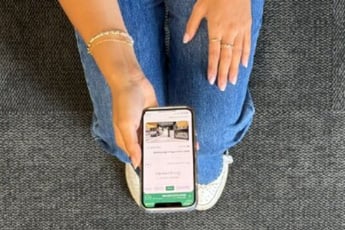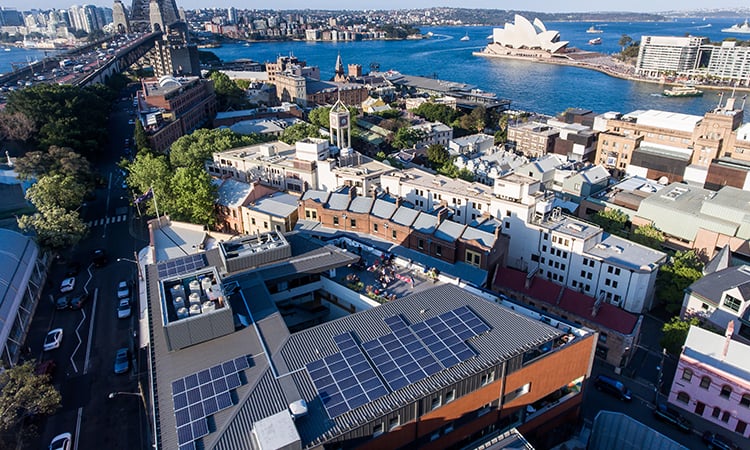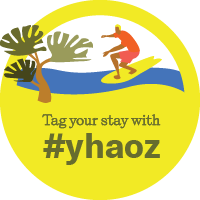Drop the bear: Why you shouldn’t cuddle a koala
If you’ve dreamed of holding a koala in your arms while travelling around Australia, then you’re not alone. Arguably Australia’s most loved native animal, it’s hard to resist the charms of this furry, tree-dwelling cutie. But holding a koala is a bit of a no-no these days. Here’s some reasons why shouldn’t get that koala cuddle shot (and some better ways to admire Australia’s favourite marsupial).
Cuddles from humans cause stress
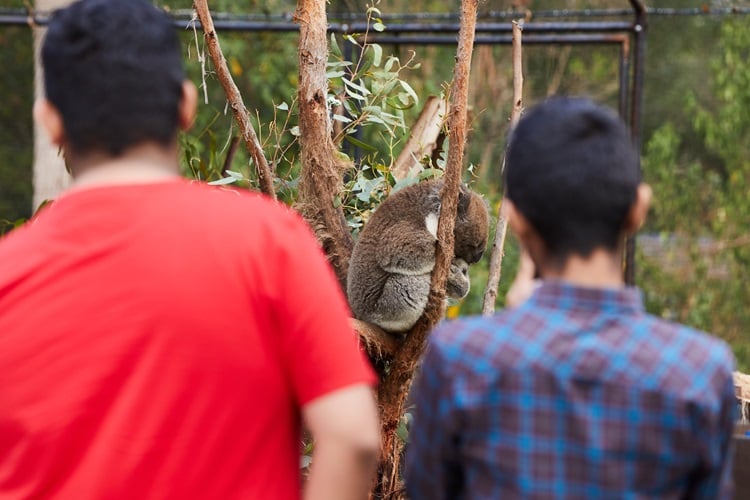
Image: Tourism Australia
Koalas may look like docile, chilled creatures but researchers have found that this precious species suffers from ‘silent stress’. Many studies have shown that koalas get stressed when near humans, so being used as a photo prop compromises their welfare. So how does stress impact koalas? Researchers have found that when under stress, koalas produce higher amounts of a hormone called cortisol. Over time, this stress response can hinder a koala’s ability to fight off diseases and infections, often leading to a premature death. This is likely why the survival rate of rescued koalas remains quite low despite best efforts to treat and rehabilitate them.
Since ongoing stress is associated with lower rates of survival, some states (like Victoria and New South Wales) have passed laws making it illegal for any zoo or sanctuary to allow visitors to hold a koala. Love koalas? Let them live their best lives in peace by not paying for a photo op that causes them harm.
You might get hurt or injured
While koalas may look super cute and cuddly, it’s important to remember they are still wild animals with very sharp claws and a set of teeth they’ll use if they feel threatened. If you see a koala while you’re out in nature hiking or camping, touching or picking it up just isn’t wise. Like many other wild animals, koalas can become aggressive when approached or touched. A koala could bite you or scratch you if it feels cornered, so to avoid a painful injury it’s best to not handle koalas (or any other wildlife) at all. Not convinced? There have been several documented cases of koala bites resulting in nasty infections that required antibiotic treatment and/or surgery, so it’s best not to risk ruining your trip to Australia by spending it in a hospital getting stitches or antibiotic therapy.
So what should you do if you see an injured or distressed koala in the wild? Call an animal rescue agency in your state to report your concerns and receive expert advice on what to do.
Touching koalas could encourage problematic behaviours
Doing it for the ‘gram might seem like fun at the time, but the power of social media means that posting an impromptu snapshot of you hugging an unbearably cute koala could encourage others to do the same on their next trip. Instead, why not post a story sharing why you opted out of a touching a koala? Getting people to rethink how they interact with wildlife will have a far more positive impact on the world than getting a few social media likes for a photo you’ll likely end up regretting in the future.
Koalas have enough on their plates (apart from gum leaves)
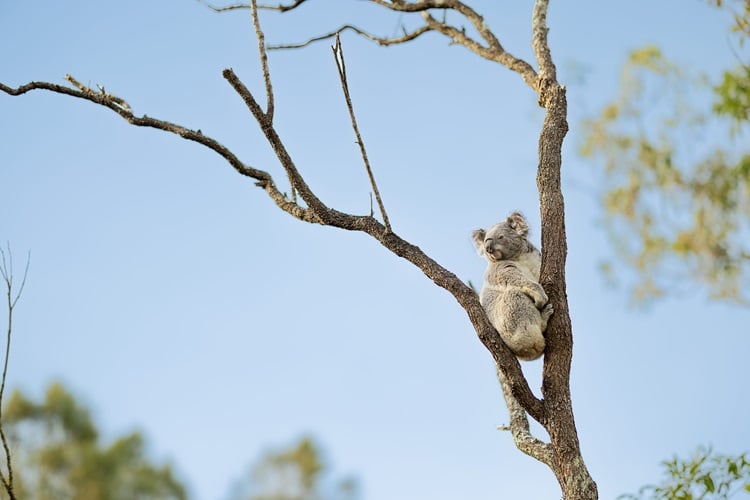
Image: Tourism Australia
Sadly, koala populations are in decline in most states. Disease, bushfires, road deaths and habitat loss caused by deforestation have dealt blow after blow to this fragile species that’s listed as endangered in Queensland, New South Wales and the ACT. With koalas on the brink of extinction, these little survivors need to be given the utmost respect when encountered in the wild. See a koala while you’re out mountain biking or hiking? Stop and admire it from a distance, log the sighting with the relevant state authority (there’s an app for that!) and quietly wish it well, but don’t add to the many threats it’s facing by trying to pat it or pick it up.
Support koala allies instead
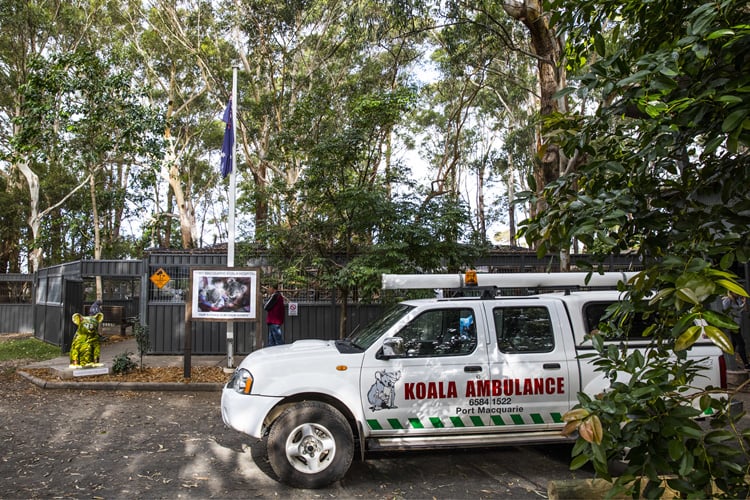
Image: Destination NSW
Just like reviewing your questionable fashion choices from ten years ago, in the future you’ll probably cringe at those old photos of you holding a koala. Once upon a time, riding elephants in India and patting sedated captive tigers in Thailand was popular. The world has come a long way when it comes to the ethics of animal encounters, and these types of experiences have gone from brag-worthy to cringe-inducing. With the tide turning against animal exploitation, it’s no longer okay to stress-out animals for our own enjoyment or entertainment.
Thankfully, there are ways you can see and admire koalas in a more ethical way. Apart from spotting a furry face up in the trees while bushwalking, visiting not-for-profit conservation organisations that rescue and rehabilitate animals is another way you can see koalas and other native wildlife while also supporting conservation efforts.
In New South Wales, book a tour of the Koala Conservation Hospital in Port Macquarie or enjoy an encounter with a koala at Taronga Zoo. In Victoria, you can get your koala fix by looking up into the canopy while bushwalking in the Otways region, visiting social enterprise sanctuary Wildlife Wonders in Apollo Bay, booking a ‘no contact’ koala experience at Healesville Sanctuary or while wandering the treetop boardwalks at Phillip Island’s Koala Conservation Reserve. In Queensland, Noosa National Park and North Stradbroke Island both have wild koala populations, so be sure to be on the lookout for them while hiking in these regions. In South Australia, Adelaide Hills and Kangaroo Island are your best bests for a sighting in the wild. While koalas aren’t native to Western Australia, the species was introduced about 90 years ago. Head to Yanchep National Park’s special raised boardwalks to see the marvellous marsupials eating and snoozing in the trees.
Words: Jo Stewart
Read next: Where to see Aussie animals in the wild
Sustainability at YHA
Properties across our network feature energy-efficient and water-saving features like solar panels, rainwater tanks and recycling facilities.
Share your stay
Tag us in your social posts and share your story by using #yhaoz or #yhaaustralia
